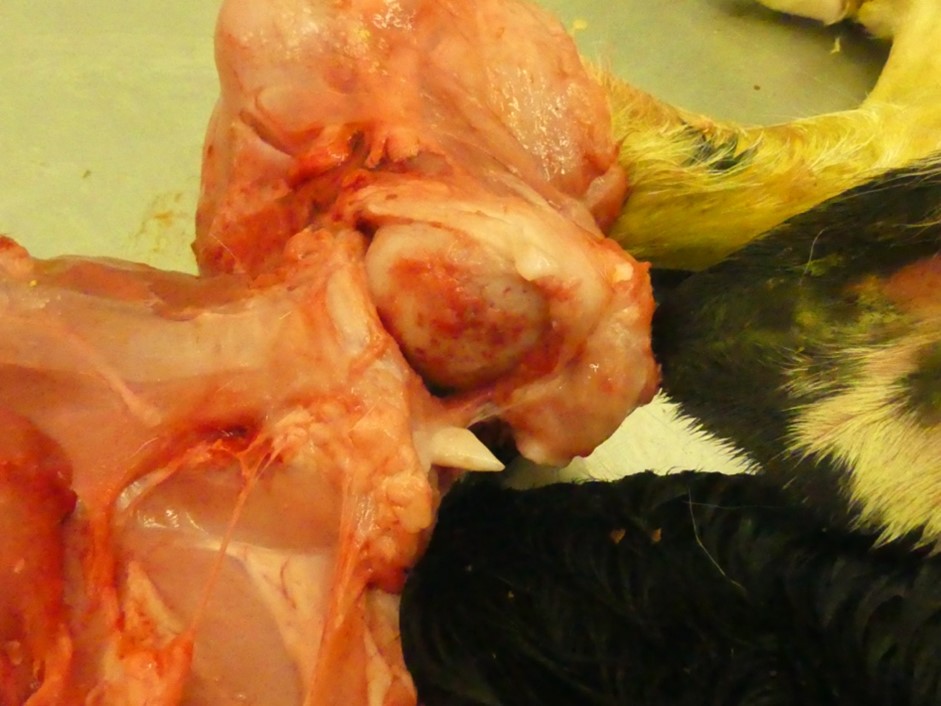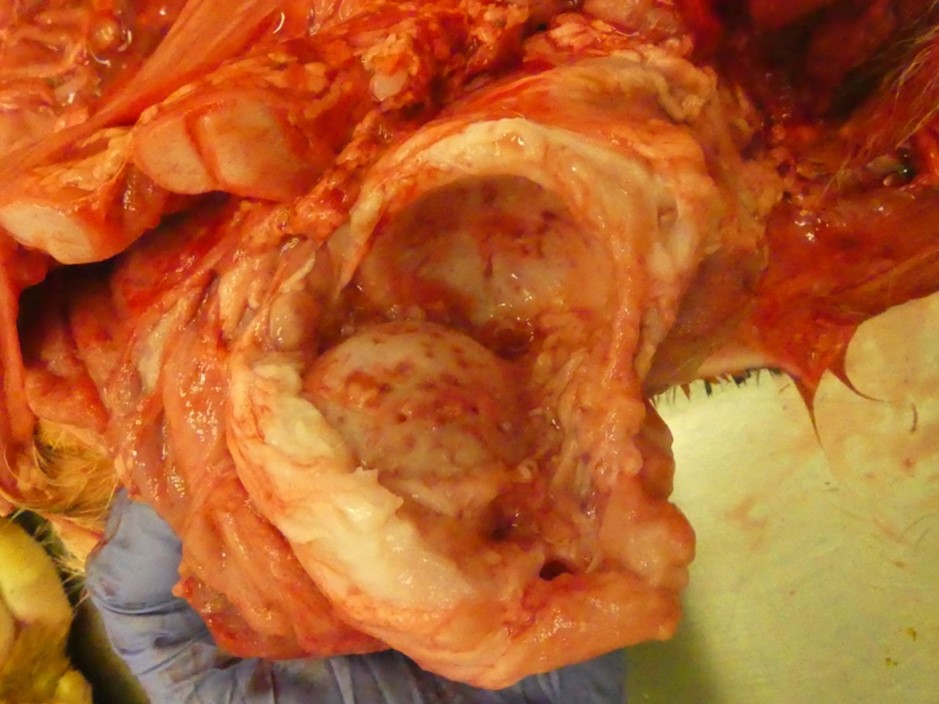Ureaplasma infection
(NY) An embryo-transfer calf was aborted at 236 days of gestation at a dairy farm that primarily uses embryo transfer, in vitro fertilization, and artificial insemination for reproductive management. The fetus, placenta and the dam’s blood were submitted to the Cornell AHDC diagnostic testing. Grossly, the fetus presented with fibrinous arthritis with ulcerative changes, fibrinous pneumonia, and necrotizing amnionitis, all of which are suggestive of Ureaplasma infection. Histological examination confirmed the gross diagnosis. Bacterial culture of the fetal joint fluid yielded Ureaplasma sp., which supports the findings of the gross examination, consistent with Ureaplasma abortion.
Ureaplasma spp., similar to the closely related Mycoplasma spp., are pleomorphic, microaerophilic bacteria that do not synthesize cell walls. Of the seven named species, Ureaplasma diversum can be found in the respiratory and genital/reproductive tracts of cattle. The organism has been isolated in cases of bovine granular vulvitis and caudal reproductive tract infections, and has been associated with subclinical endometritis, early embryonic deaths, and abortions. U. diversum could be spread from bulls to cows through either natural service or artificial insemination with fresh or frozen semen. Reported cases have also shown the ability of U. diversum to infect embryos and cause gestational losses in the recipient heifers, despite proper processing and standard washing protocols recommended by the International Embryo Transfer Society. In clinically affected cows, cloudy or mucopurulent vaginal discharge, granular lesions on the vulva, mild vulvar epithelium hyperemia, and reproductive failure may be observed. When diagnosing U. diversum, a ureaplasma culture can be performed at the AHDC on placenta and fetal tissues. A ureaplasma PCR is available at Iowa State University Veterinary Diagnostic Laboratory. Culture and/or PCR of U. diversum from fetal samples, along with histologic lesions, confirm diagnosis of the disease. Treatment and preventive measures against U. diversum infections include improving facility sanitation, decreasing environmental stressors, using "double-sheathing" techniques during artificial inseminations to avoid contamination of the uterine environment with vaginal organisms, and evaluating the herd's nutritional status and concurrent diseases.
Images of erosive arthritis of the left and right glenohumeral joints in the bovine fetus:


References:
Crane, M. B., & Hughes, C. A. (2018). Can Ureaplasma diversum be transmitted from donor to recipient through the embryo? Two case reports outlining U. diversum losses in bovine embryo pregnancies. The Canadian veterinary journal = La revue veterinaire canadienne, 59(1), 43–46.
Divers, T. J., & Peek, S. F. (2007). Rebhun's diseases of dairy cattle. Elsevier Health Sciences.
Santos Junior, M. N., Macêdo Neres, N. S. D., Campos, G. B., Bastos, B. L., Timenetsky, J., & Marques, L. M. (2021). A Review of Ureaplasma diversum: A Representative of the Mollicute Class Associated With Reproductive and Respiratory Disorders in Cattle. Frontiers in veterinary science, 8, 58.


